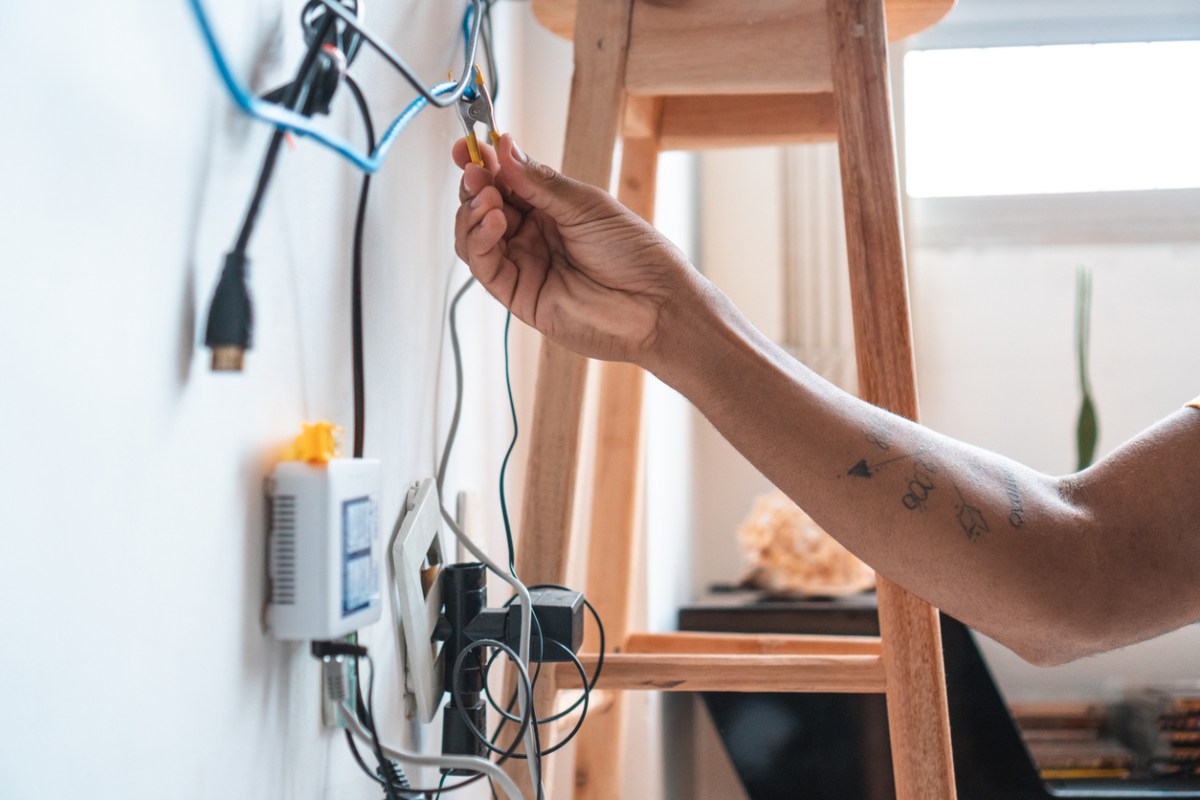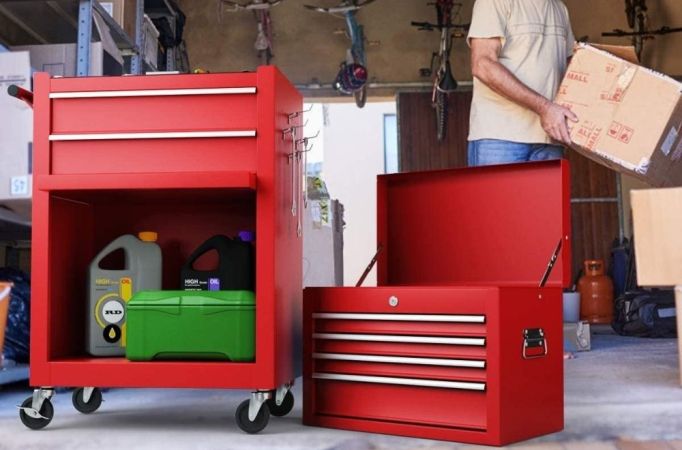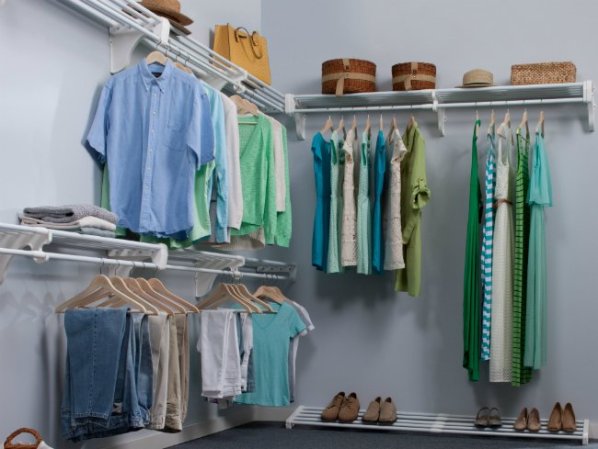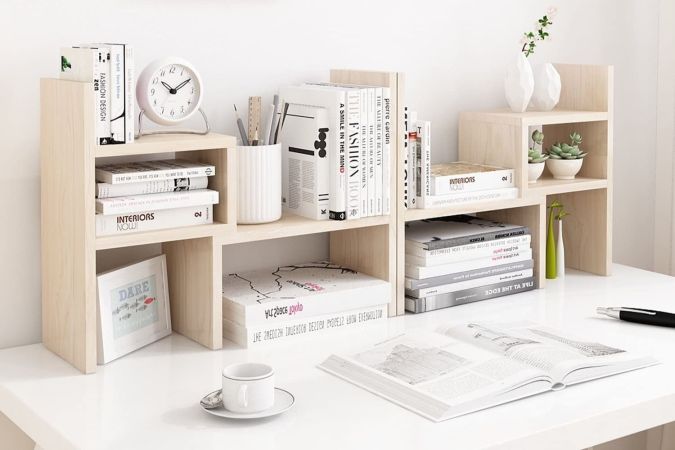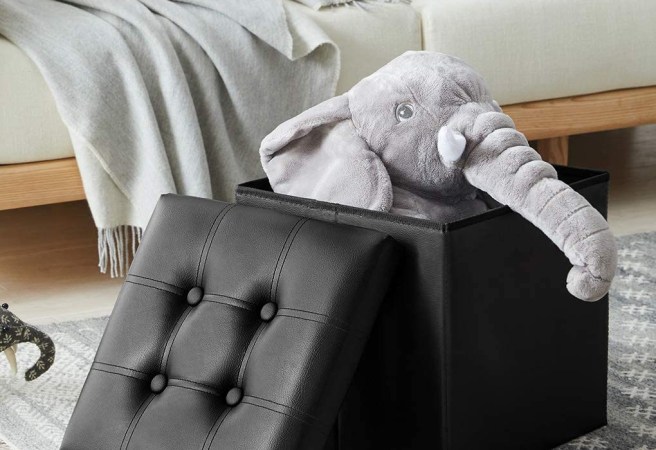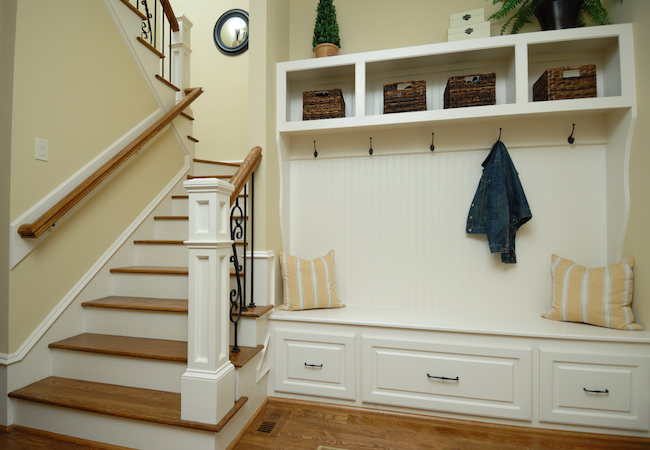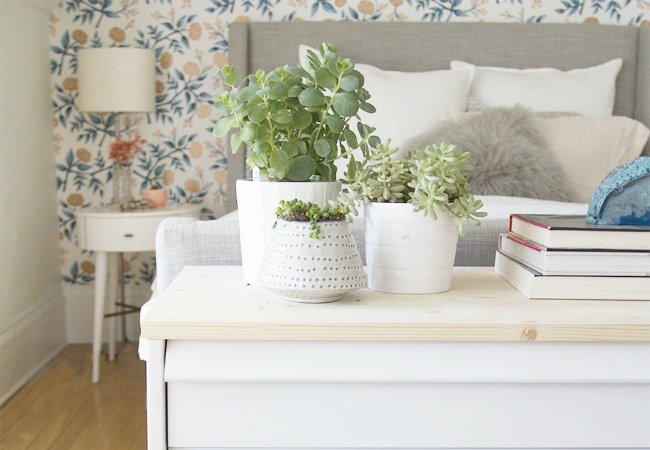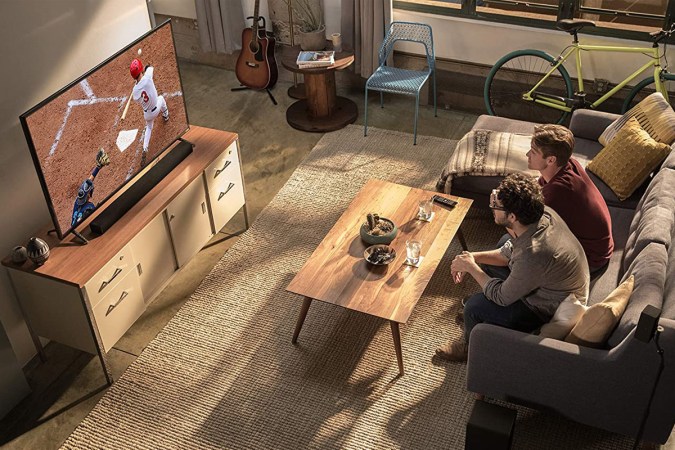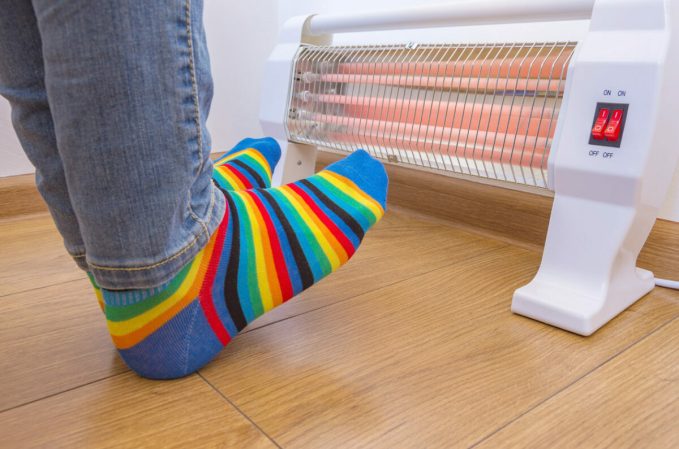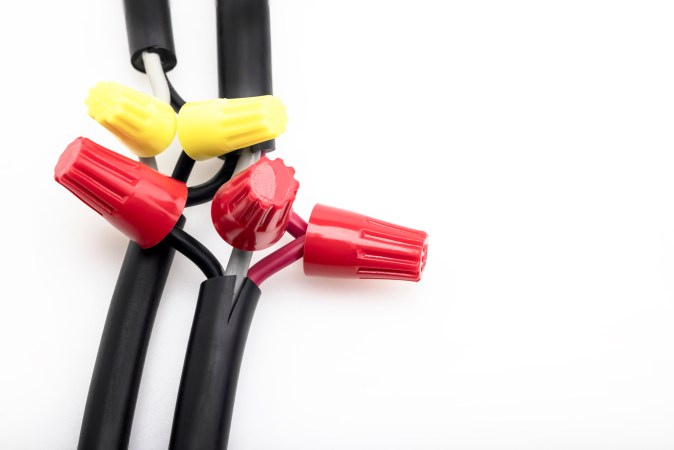We may earn revenue from the products available on this page and participate in affiliate programs. Learn More ›
Does your enthusiasm for electronics have you living in a jungle of cords? Given the sheer volume of wires that dwell in a modern home, figuring out how to hide TV wires, cords, and cables for other must-have gadgets can be frustrating. But before you hit a point of swearing off technology altogether, check out the cord management solutions below. You can buy or DIY to disguise or hide every wire in sight and permanently improve the organization of your home.
1. Hook cords to the back of your furniture.
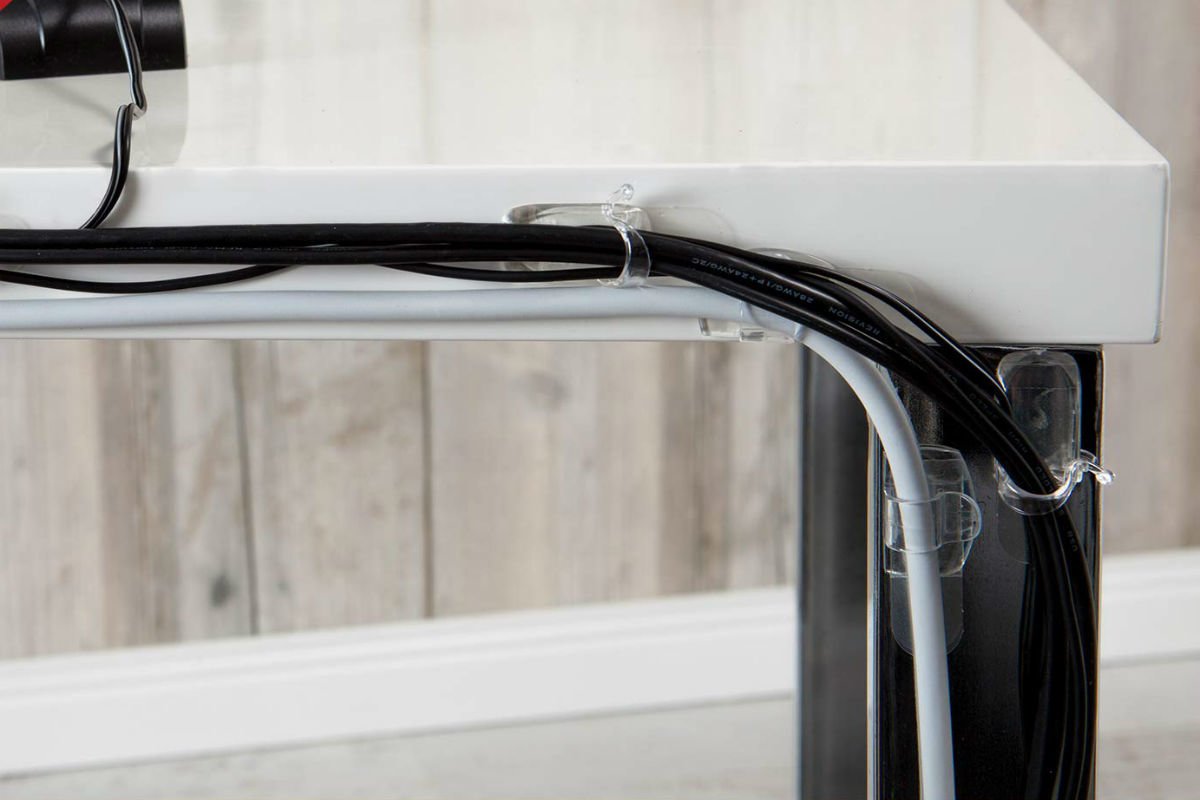
Dangling cords disappear quickly when you anchor them to the silhouette of the nearest furniture. To do so, adhere clear cord clips like these Command Cord Clips along the back edges of your furniture. Like most of the line of renter-friendly solutions from 3M, you’ll need to press the clips in place for 30 seconds and, an hour later, you can hook in one or more cords and have them run neatly down the legs of your console. (These hooks help hide charging cords and cables at your desk really well, too!)
If you’re feeling a bit craftier, you can hide a tangle of cables behind a stand-mounted TV by incorporating built-in cord storage into the design of your DIY TV stand. This TV table designed by Heidi from Kruse’s Workshop (and featured on Tatertots & Jello) keeps cables contained in a notch that runs down the middle leg at the back of the unit. You can recreate the stand from scratch with reclaimed wood: Follow our detailed instructions for how to use a table saw to create a recessed groove in the back leg, then run the cords for your TV and other entertainment essentials down the groove in the leg to keep them out of sight.
2. Corral cables behind the couch.
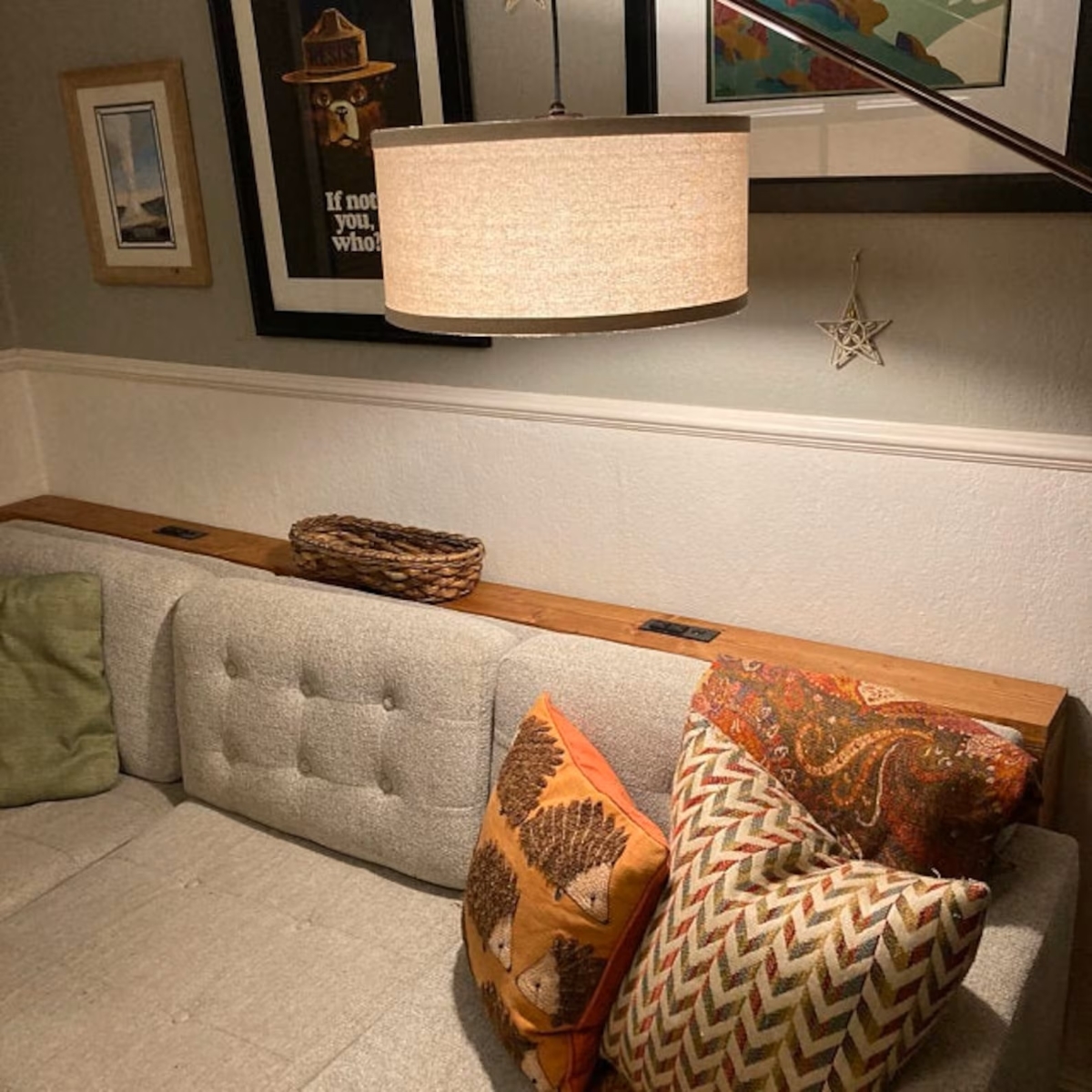
Disguise the clutter of all those charging cords with this slim sofa table from Etsy seller MittenStateWoodworks. At just 5 inches deep, the table tucks neatly behind any couch and features a built-in outlet with two USB ports for charging your personal electronics out of sight. You can also plug in a lamp for additional lighting and display your favorite decor on the table, too. Just be sure to keep drinks and other liquids away from the table’s electrical components.
3. Hide TV wires in plain sight.
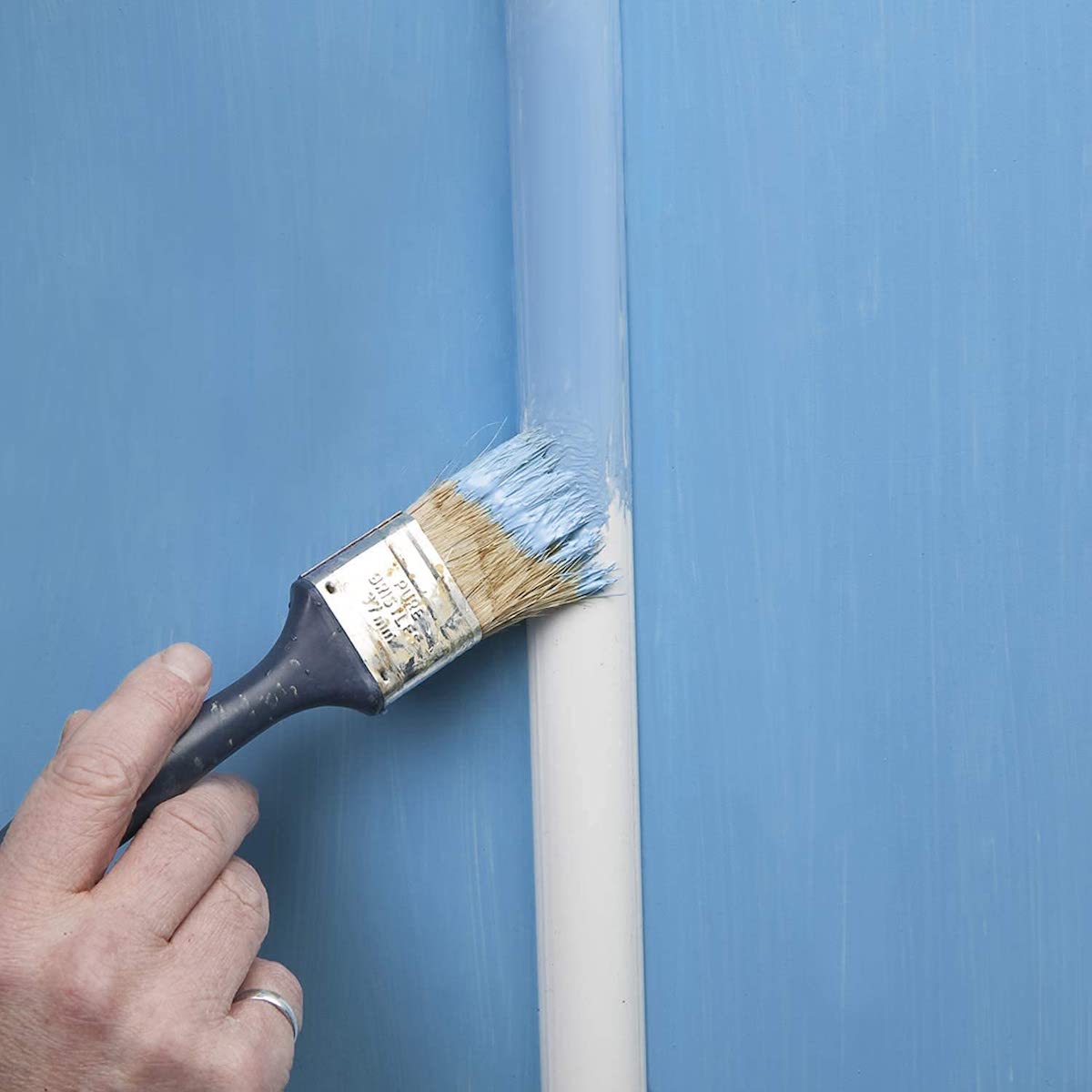
If the cords dangling from your wall-mounted TV are distracting you from what’s on screen, conceal them with cord covers like the D-Line Cable Raceway, a favorite in our researched guide to the best cable management solutions. Plastic tracks like these mount directly to the wall on top of wires.
To install and effectively hide TV wires, measure the span of wall between the base of the screen and the floor—that’s the length of cord cover you need, and you can often cut to fit. In the case of the Cable Raceway, you’ll cut the base and top of the cord cover using a hacksaw. Then, mount the raceway base to the wall with screws according to the manufacturer’s instructions, lay the TV cords inside the channel, and snap the cover in place over the top. Cord covers are typically sold in neutral colors like white or metallic gray that can stand out if your wall is a different color. But when painted the same color as your wall (using latex-based paint), they seamlessly blend into the space.
4. Run TV wires inside the wall.
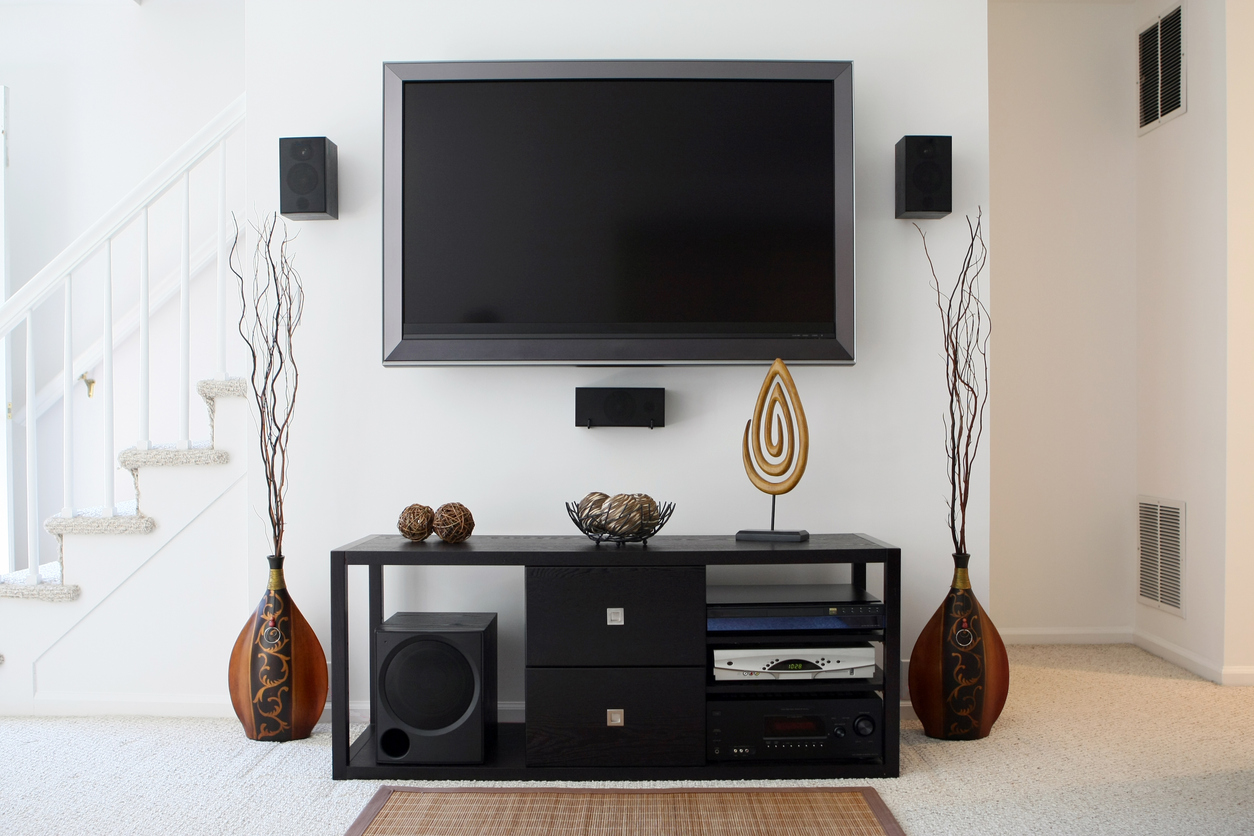
The best solution for keeping the cords of a wall-mounted TV out of sight involves hiding them behind the wall itself using recessed cable plates like the DataComm Easy Mount Cable Organizer Kit. Remove the TV from the wall (or move it aside if your TV has an adjustable arm), and then use a stud finder to find two stud-free sections of the wall: one behind where the screen would sit, and another further down the wall near an outlet. These are where you’ll make your cuts using a utility knife, fit two cable plates, and feed the TV cords in and out of the wall. Your guests may just mistake your new media setup for a wireless entertainment system.
RELATED: How to Mount a TV on the Wall
5. Tuck cord chaos into tubing.
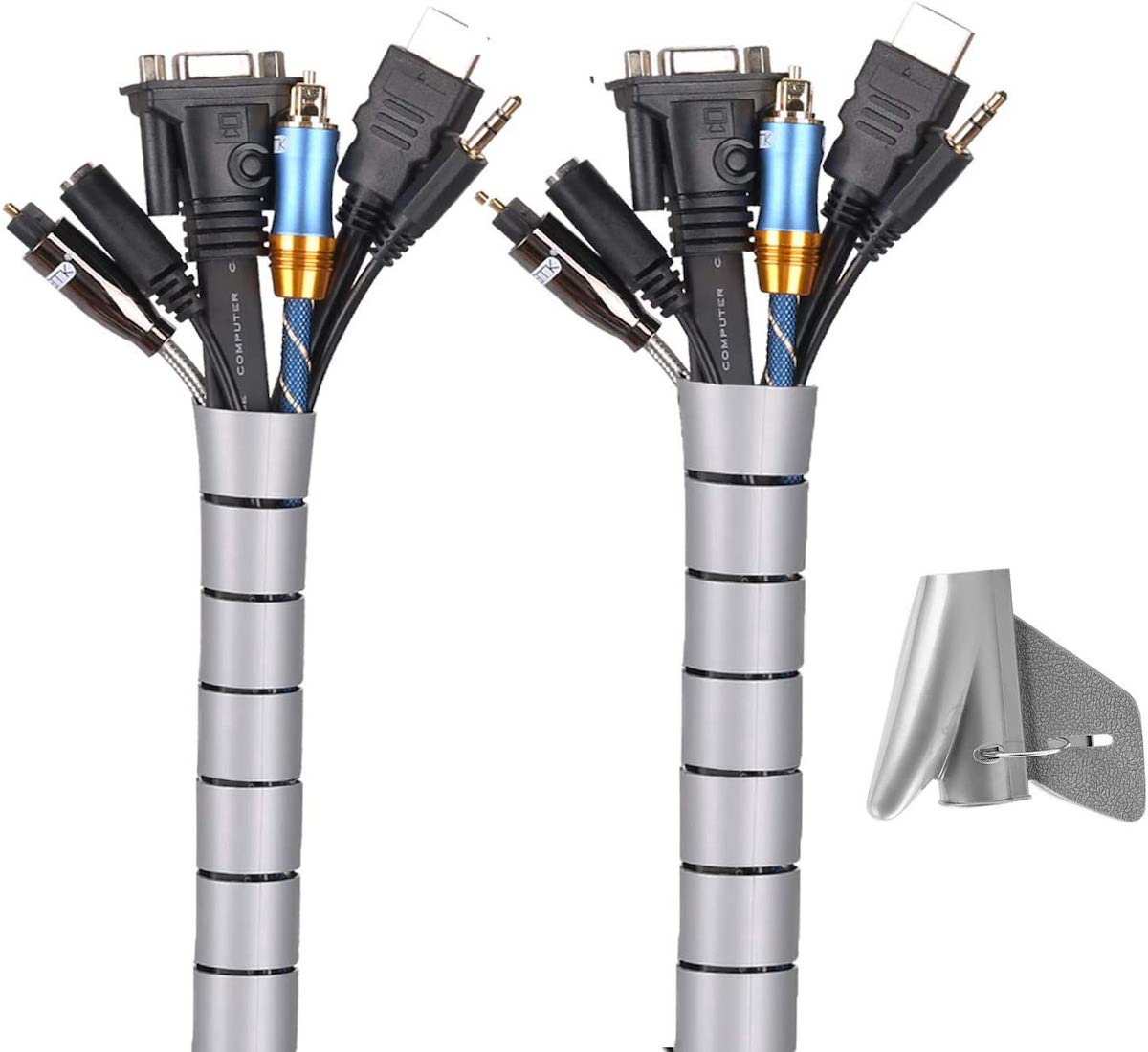
Can’t manage the melange of cords in your home office for PCs, monitors, phones, printers, and other devices used daily? A cable wrap like the MOSOTECH 120-inch Cable Sleeve provides an easy way to consolidate all the loose cords that dangle from your desk. Simply bundle them together in your hands, and wrap the two-foot-long pieces of flexible foam tubing around the wires to corral them into one larger one and minimize chaos. Thanks to the slinky shape, you can break out and redirect wires from the group anywhere along the stretch so that they can reach exactly where they need to go.
6. Slip them into a drawer.
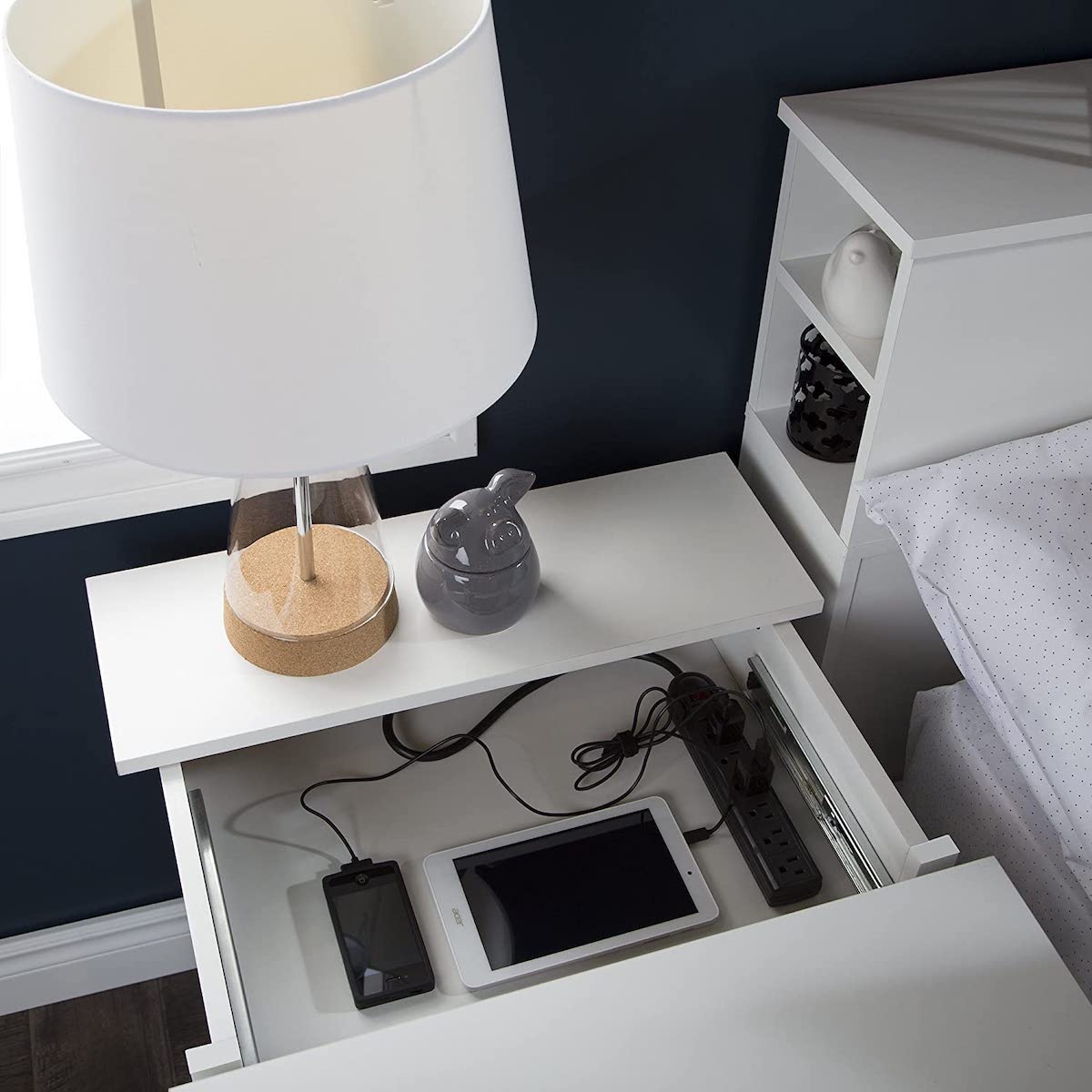
Making a few creative modifications to a desk drawer can do away with the eyesore of a clunky power strip parked on the floor and overflowing with cords. With a hole saw bit attached to your power drill, drill a hole into the back panel of the desk drawer located near a wall outlet. Then, feed the power strip cable through the hole and use double-sided adhesive to mount the back of the power strip itself to the same drawer panel. As you plug electronics into the power strip, create a space for each gadget to rest while it charges in the drawer, just as home blogger Jenny Steffens Hobick does in her kitchen cabinetry.
If you’d rather buy than DIY, check out the South Shore Vito nightstand with a built-in charging station.
7. Snake cords through baseboard accessories.
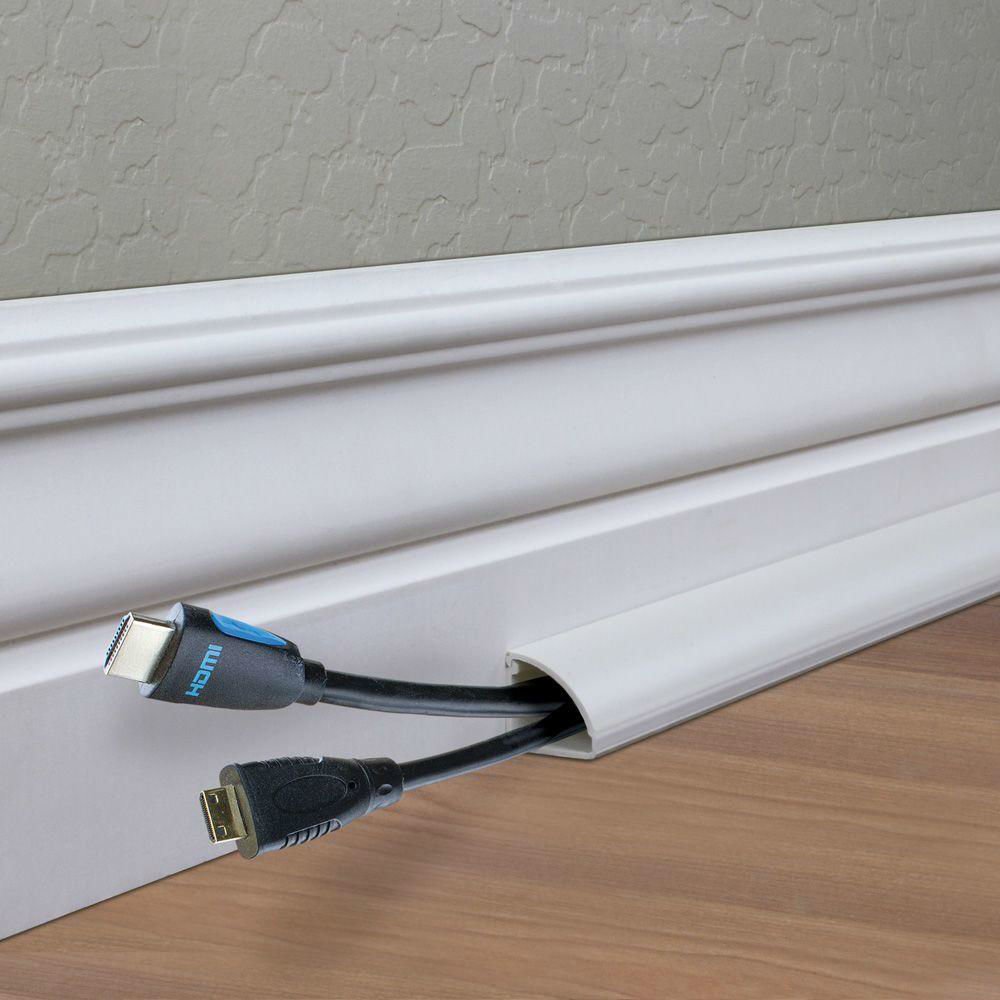
Eliminate the tripping hazard of a cable running the length of your home office, living room, or bedroom by outfitting existing baseboards in the room with baseboard cord channels. The self-adhesive, impact-resistant cord channels are little more than hollowed-out sections of plastic quarter round shoe molding. To mount the channels to your baseboards, peel off the adhesive backing of a channel, press the back of the channel against a baseboard, and then run an ethernet cable—or any other cord, for that matter—through the opening in the channel to simultaneously hide and protect the cables from damage. Stainable and paintable, the baseboard cord channels can be dressed to match any interior design aesthetic.
8. Stash wires and routers in “books.”

Your router or modem can appear out of place almost wherever you fit it, but especially so on your shelves. Consider bookending your home library with this creative router cover available from Etsy seller Covobox. You could also DIY a version of this by repurposing a binder that’s wide enough to fit your router and using hot glue to cover the back, front, and spine of the binder with colorful scrap fabric. Then sandwich the binder vertically between some books on an end table, desk, or shelf so that the router cables discreetly run down the length of the wall behind the furniture. Voilà! An instant classic that cuts cord clutter.
RELATED: How to Restart a Router and Modem
9. Follow the chair rail.
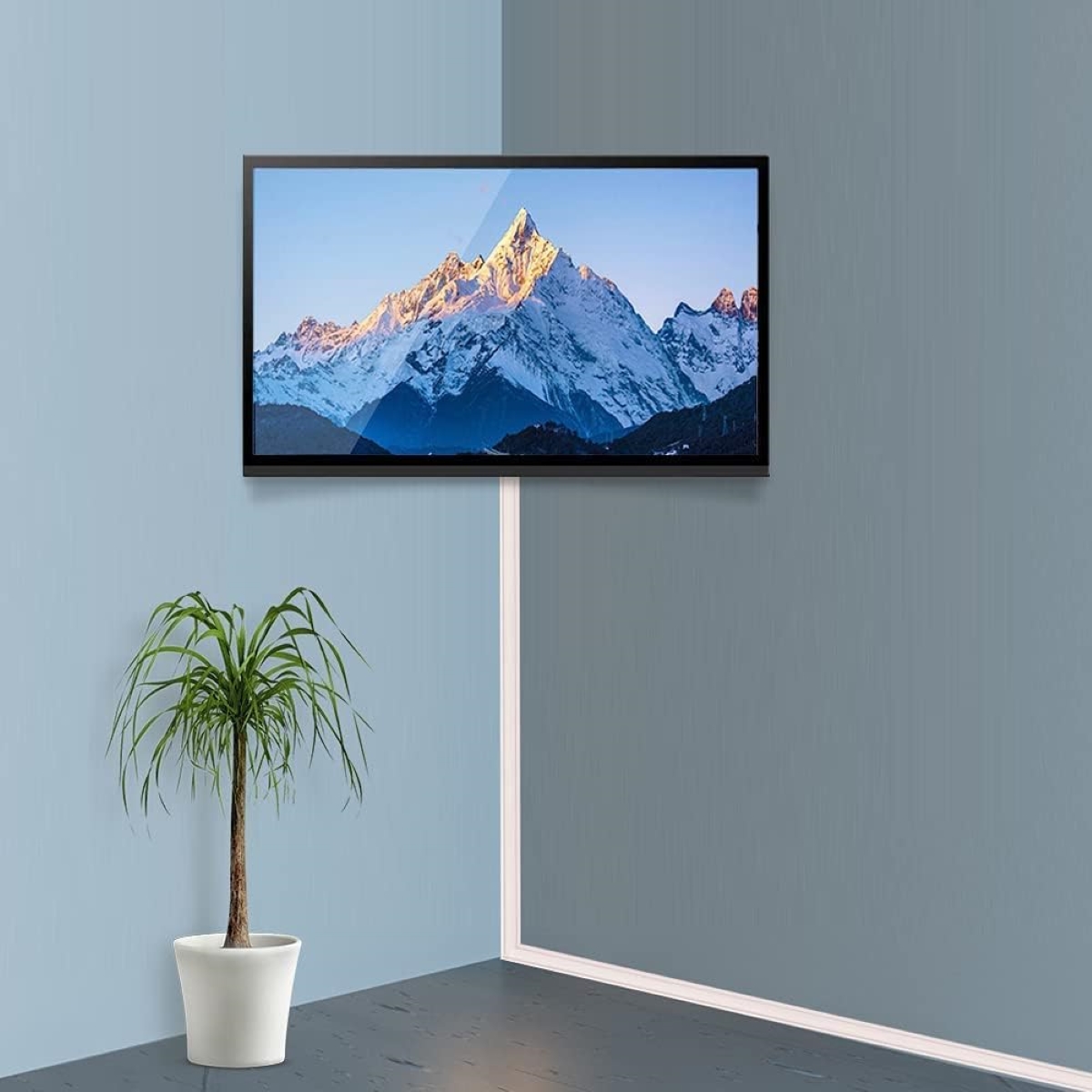
Homeowners who are thinking of decorating their walls with a chair rail have an opportunity for cleverly disguising a TV wire or other cords: Use a cord cover raceway like this one from ZGYJM that’s designed for baseboards, but flip it 90 degrees so a flat side is on top. Then position it underneath 1-by material that runs the length of the wall. The corner cord concealer will look like part of the molding, and you can use a vertical cord chaser to run vertically to the outlet. Just make sure to paint the cord covers so they blend with the decor.
10. Add living room furniture with hidden outlets.
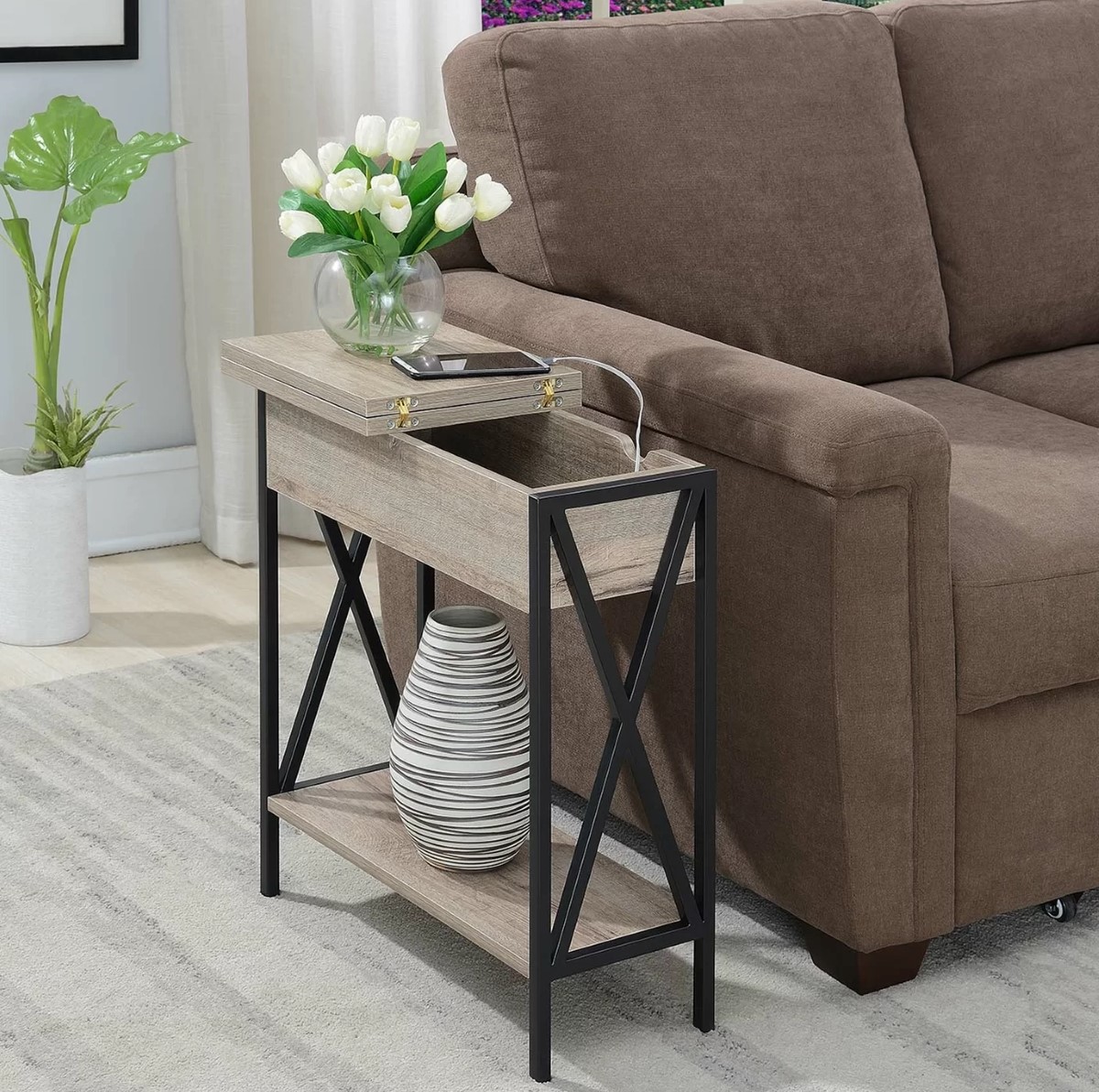
Instead of plugging everything into the wall, minimize the number of cords that need a wall plug with furniture that has integrated outlets and USB ports like the Lark Manor Ariyana end table. A slim table at just 11.25 inches wide, the end table has a partial flip-top that conceals two standard outlets and two USB ports. You’ll still need to run its 6-foot-long power cord to run to an outlet, but that’s just one instead of potentially five.
11. Camouflage cords on the floor.
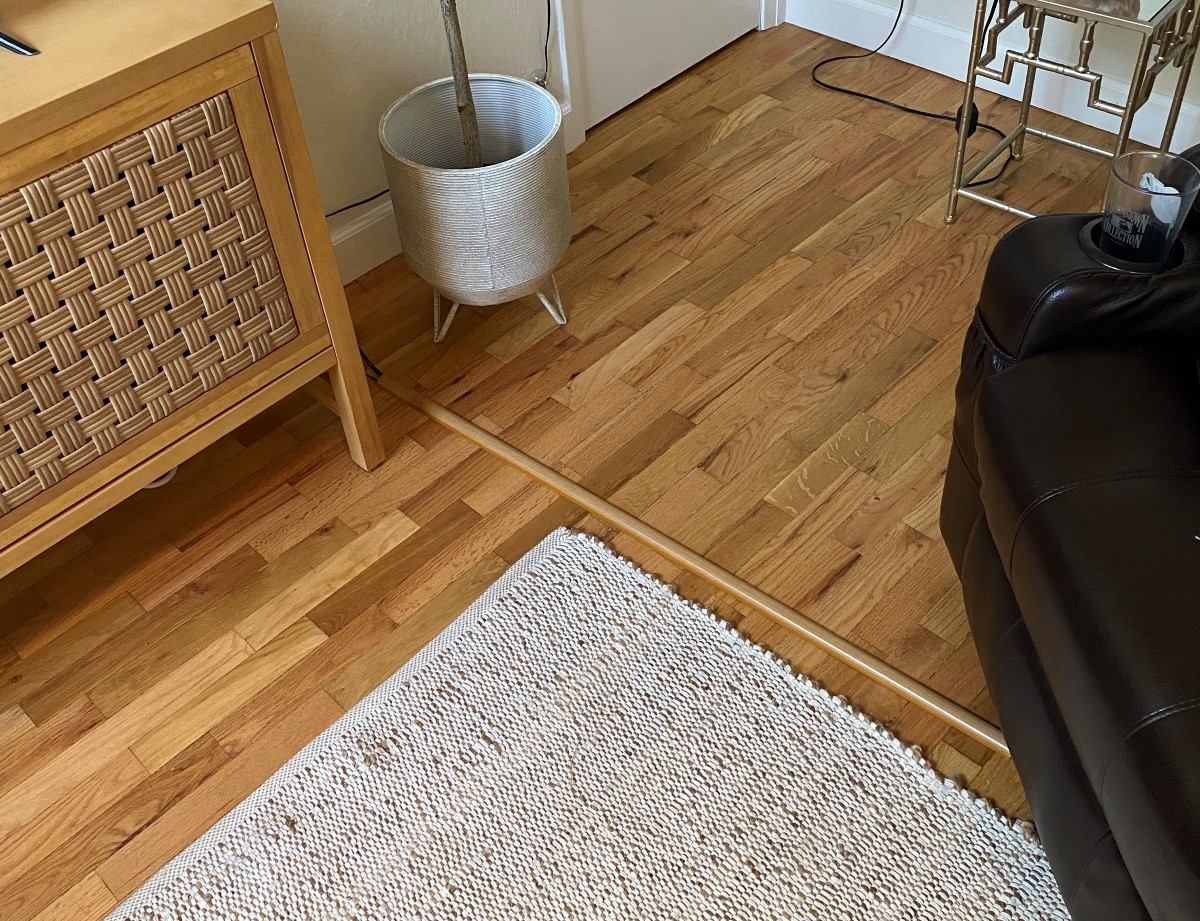
If you find yourself in the situation presented above, with furniture or electronics that need to be plugged into wall outlets but are nowhere near them, sometimes the easiest solution can be the best. Instead of worrying about moving electronics and furniture so wires are closer to outlets, just run the wires along the floor and cover them with a floor cord cover that looks like wood from Electriduct to blend in with your flooring. In colors from cherry to dark brown, the strips mimic wood grain, too.
12. Add wainscoting to create a channel for wires.
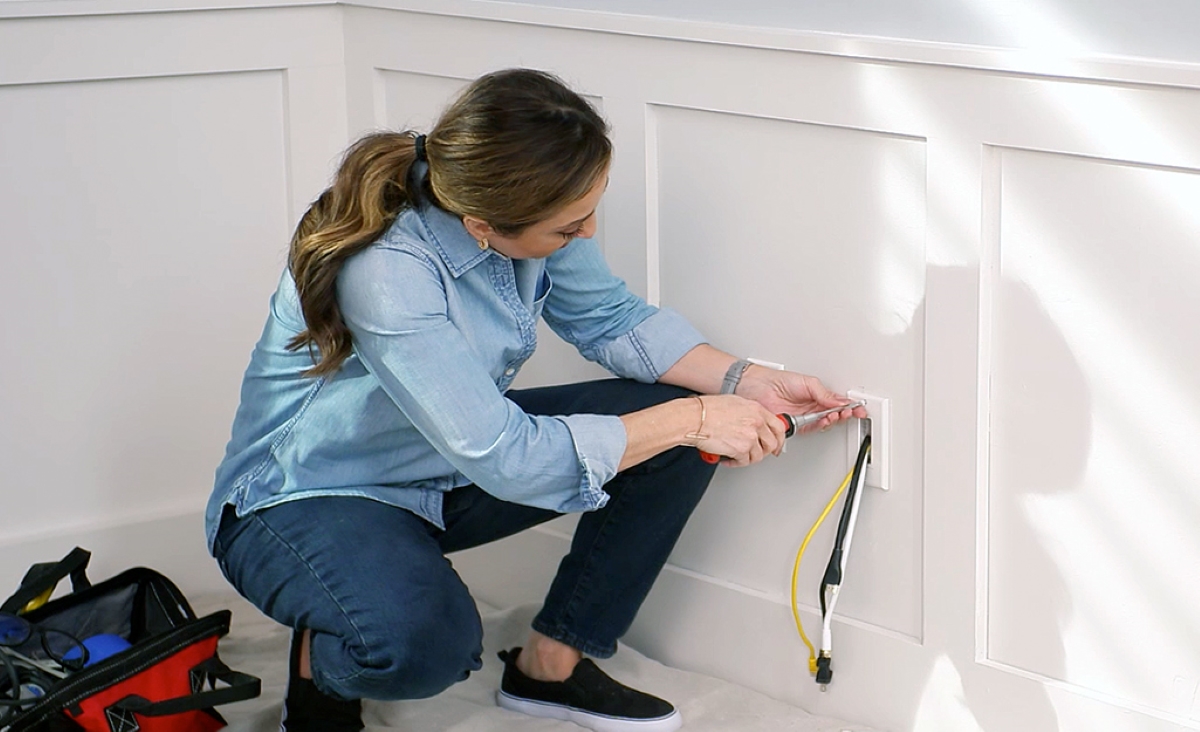
Beyond covering and concealing cords along the floor on inside furniture, consider giving the room a stylish upgrade that offers an easy-ish way to conceal cords and move outlets to where you actually need them. By installing wainscoting like beadboard an inch or so in front of the wall, there’s space to run conduit like this 10-foot-long PVC conduit, which can house TV cords or other wires. Make sure to cap it with chair rail and trim the bottom with baseboard for a finished look.
Bonus: The beadboard also opens up the opportunity to move outlets to where you actually want them, and there’s no need to finish drywall. Just make sure to hire an electrician if you aren’t experienced working with electricity.
